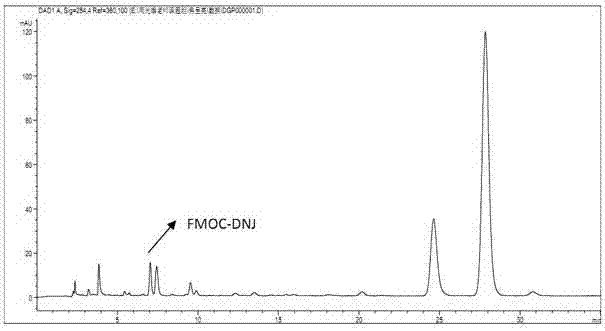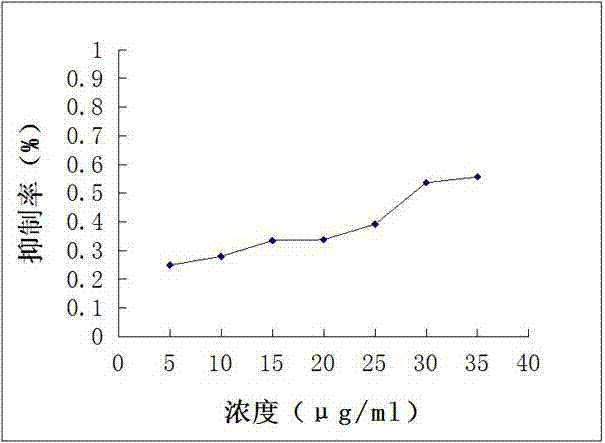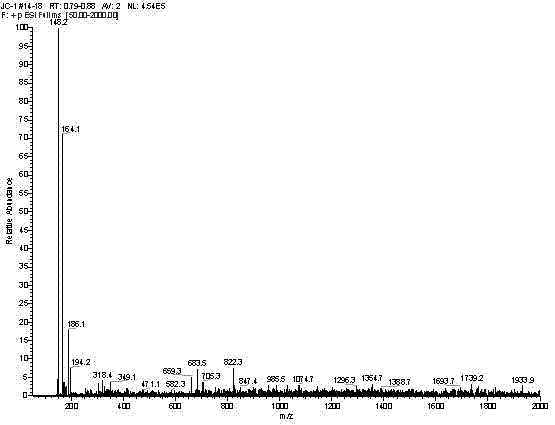Cortex lycii active site and preparation method and application thereof
A technology of the active part and Digupi, which is applied in the field of preparation of the active part of traditional Chinese medicine, can solve the problem of insufficient stability of curative effect, and achieve the effect of clear mechanism of action, definite curative effect and low cost
- Summary
- Abstract
- Description
- Claims
- Application Information
AI Technical Summary
Problems solved by technology
Method used
Image
Examples
Embodiment 1
[0028] Example 1. The preparation method of the active site of Cortex Digustifolia
[0029] S1. After crushing Digupi, use 10 times the amount of water to heat and reflux at 100°C for 2 extractions, each time for 120 minutes, then concentrate the extract to 1 / 4 of its original volume by suction filtration, and add 95% ethanol for alcohol extraction. The final ethanol concentration is about 75%, and the supernatant is concentrated under pressure to obtain a stock solution.
[0030] S2. Pass the stock solution through the macroporous adsorption resin, the ratio (weight) of Digupi original medicinal material to resin is 1:3, wash the resin column with deionized water 3 times the volume of the resin bed, collect the eluate, and concentrate under reduced pressure to obtain Sample 1.
[0031] S3. Exchange sample 1 with a strong-acid cation-exchange resin (cross-linked polystyrene-based strong acid resin with a model number of 001×7), rinse the resin column with deionized water 3 ...
Embodiment 2
[0033] Example 2. A liquid phase analysis method for the active part of Digustifolia
[0034] FMOC-Cl (fluorenylmethoxycarbonyl chloride) is a relatively new amino derivatization reagent, which is mainly suitable for the derivatization of primary and secondary amines, and the derivatives after the reaction have UV absorption. The anti-diabetic active molecule of Digupi has a secondary amine structure, so FMOC-Cl can be used as a derivatization reagent for derivatization. Take 50 μl of sample 3 solution in Example 1 in a 1.5ml centrifuge tube, add 200 μl of 0.4mol / L potassium borate buffer solution, then add 250 μl of 5 mmol / L FMOC-Cl (50% acetonitrile configuration), shake well, and place at room temperature After 30 minutes, add 25 μl of 1mol / L glycine (Gly) to stop the reaction, then add 80 μl of acetic acid solution with a volume fraction of 1%, add water to make up to 1000 μl, and finally filter the solution with an organic membrane to obtain the test solution. HP...
Embodiment 3
[0035] Example 3 Inhibition of α-glucosidase activity by the active site of Cortex Dictica
[0036] Inhibition of α-glucosidase activity by the active part of Digustifolia (prepared in Example 1): Take 1.85 ml of pH6.8 phosphate buffer solution, add 0.1 U·ml -1 50 μL of α-glucosidase, different concentrations of Digustifolia active site solution (0, 1, 2, 3, 4, 5, 6, 7 mg·ml -1 ) 50 μL, 0.0116 mol L -1 pNPG 50 μL, after incubating the above reaction system in a constant temperature water bath at 37 °C for 30 min, immediately add 0.1 mol L -1 Na 2 CO 3 8 ml of the solution was used to stop the reaction, and three replicates were performed for each concentration, and the average value was taken.
[0037] According to the above-mentioned method and calculation formula, obtain the inhibitory action figure of Digupi active site to α-glucosidase, such as figure 2 shown. It can be clearly seen from the figure that the active part of Digupi has a strong inhibitory effect...
PUM
 Login to View More
Login to View More Abstract
Description
Claims
Application Information
 Login to View More
Login to View More - Generate Ideas
- Intellectual Property
- Life Sciences
- Materials
- Tech Scout
- Unparalleled Data Quality
- Higher Quality Content
- 60% Fewer Hallucinations
Browse by: Latest US Patents, China's latest patents, Technical Efficacy Thesaurus, Application Domain, Technology Topic, Popular Technical Reports.
© 2025 PatSnap. All rights reserved.Legal|Privacy policy|Modern Slavery Act Transparency Statement|Sitemap|About US| Contact US: help@patsnap.com



